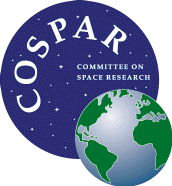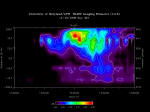Heater-Induced Artificial Airglow
Observations
From A Recent Campaign At The
HAARP Facility
 Author:
Gerken,
E.
Author:
Gerken,
E.
STAR Laboratory, Stanford University
[egerken@stanford.edu]
Publication: 34th COSPAR Scientific Assembly, The Second World
Space Congress, held 10-19 October, 2002 in Houston, TX, USA
An artificial airglow campaign was conducted from January 31 to
February 19, 2002 at the High Frequency Active Auroral
Program (HAARP) in Gakona AK.
[An] artificial airglow was observed on thirteen nights during
the campaign. The campaign was a collaborative effort with
participating instruments from a number of institutions. Three
cameras were located at the HAARP facility: an all-sky imager, a
60 degree field of view camera, and a telescopic imager.
Two cameras were located off-site for side view imaging- one at
Poker Flat Research Station, and the other
 alternating
between Nenana AK and HIPAS. An SEE receiver was operated in
Gakona and the Kodiak SuperDARN radar was run in a dedicated
mode for part of the campaign.
alternating
between Nenana AK and HIPAS. An SEE receiver was operated in
Gakona and the Kodiak SuperDARN radar was run in a dedicated
mode for part of the campaign.
In addition data was gathered throughout the campaign by the
HAARP diagnostic instruments including a riometer, magnetometer,
digisonde, ELF receiver, and TEC tomographic system. (image at
left example of
HAARP riometer data)
Several preliminary results have emerged from observations
during the campaign.
Bright 630nm (several hundred Rayleighs) and 557.7nm (over 50R)
airglow were observed simultaneously during F-layer heating.
A dramatic enhancement in airglow brightness was observed
when the HAARP heater beam was aimed along the magnetic field
lines (15 degrees from vertical).
Both structured and non-structured
airglow was observed at 630nm and 557.7nm. Patchy 557.7nm
airglow was observed to drift through the heated region. The
airglow region was displaced within the calculated 3dB heater
beam. Altitude calculations were performed from sideview
triangulations at HIPAS and Poker Flat. Sideview imaging
revealed that structure observed in the airglow region was
field-aligned. The airglow spot size did not vary at the same
rate as the beam-width at heater frequencies of 7.8MHz to
3.3MHz. Artificial airglow was observed during periods of
spread-F.
Data from the various participating
instruments illustrating these results will be presented.


